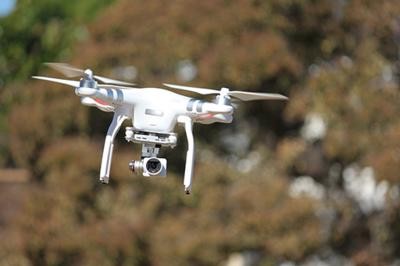Tue, Dec 26, 2023
Autonomous Industry Benefits From NASA Developments
NASA’s Langley Research Center in Hampton, Virginia has been hard at work, testing out the viability of multiple BVLOS drones flying routes sans a human operator.

Researchers are carrying out their small-scale tests using some simple, affordable drone units to see exactly what kind of infrastructural advancements need to be made behind the scenes. While autonomous aircraft are increasingly capable enough to fly a full mission from start to finish, the delicate symphony of dozens all operating in close proximity adds considerable complexity to the affair. NASA's testing is aimed at bearing out the issues, problems, and pitfalls of a hypothetical environ filled with uncrewed, autonomous air taxis, and they're already learning a lot.
“Flying the vehicles beyond visual line of sight, where neither the vehicle nor the airspace is monitored using direct human observation, demonstrates years of research into automation and safety systems, and required specific approval from the Federal Aviation Administration and NASA to complete,” said Lou Glaab, branch head for the aeronautics systems engineering branch at NASA Langley.
Traffic systems, communications, flight path management, obstacle avoidance, and operational resilience will add serious complexity to the otherwise uncomplicated A to B of drone operations. NASA's public ownership allows them to be a frontrunner of burgeoning tech that might otherwise languish in obscurity were it developed by private companies.
Some recent items were "ICAROURS (Integrated Configurable Architecture for Reliable Operations of Unmanned Systems) and the Safe2Ditch system, which allows aircraft to "observe the ground below and make an autonomous decision on the safest place to land in the event of an in-flight emergency." Both suites are aimed squarely at improving the safety of public aviation, and thanks to the taxpayer's (forced) generosity, the commercial sector can be equipped with the tools it needs to keep the traveling public safe.
More News
From 2023 (YouTube Version): Legacy of a Titan Robert (Bob) Anderson Hoover was a fighter pilot, test pilot, flight instructor, and air show superstar. More so, Bob Hoover was an i>[...]
Get The Latest in Aviation News NOW on Instagram Are you on Instagram yet? It's been around for a few years, quietly picking up traction mostly thanks to everybody's new obsession >[...]
Aero Linx: B-52H Stratofortress The B-52H Stratofortress is a long-range, heavy bomber that can perform a variety of missions. The bomber is capable of flying at high subsonic spee>[...]
Altimeter Setting The barometric pressure reading used to adjust a pressure altimeter for variations in existing atmospheric pressure or to the standard altimeter setting (29.92).>[...]
"Knowing that we play an active part in bettering people's lives is extremely rewarding. My team and I are very thankful for the opportunity to be here and to help in any way we ca>[...]
 Classic Aero-TV: Remembering Bob Hoover
Classic Aero-TV: Remembering Bob Hoover ANN FAQ: Follow Us On Instagram!
ANN FAQ: Follow Us On Instagram! ANN's Daily Aero-Linx (05.15.24)
ANN's Daily Aero-Linx (05.15.24) ANN's Daily Aero-Term (05.15.24):Altimeter Setting
ANN's Daily Aero-Term (05.15.24):Altimeter Setting Aero-News: Quote of the Day (05.16.24)
Aero-News: Quote of the Day (05.16.24)



